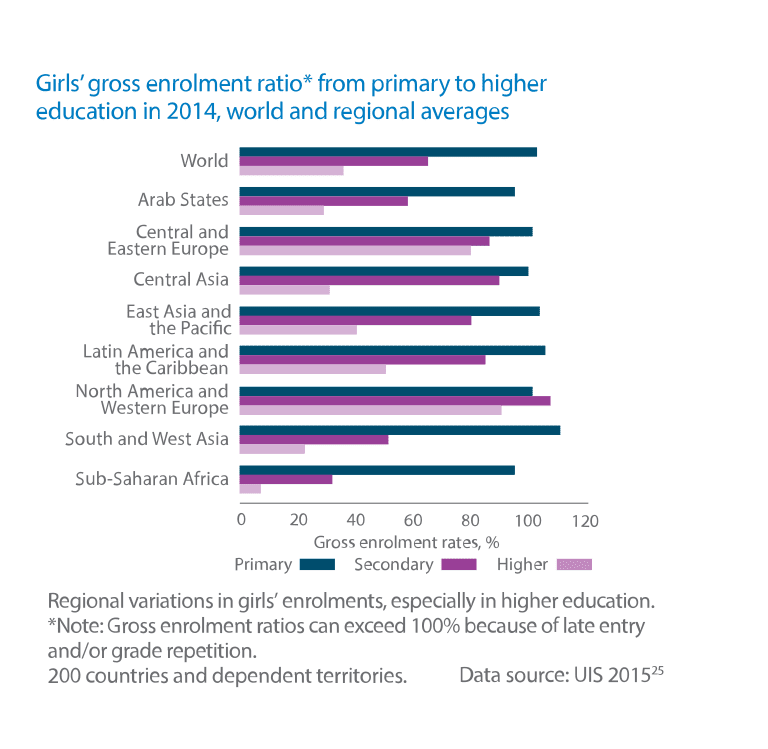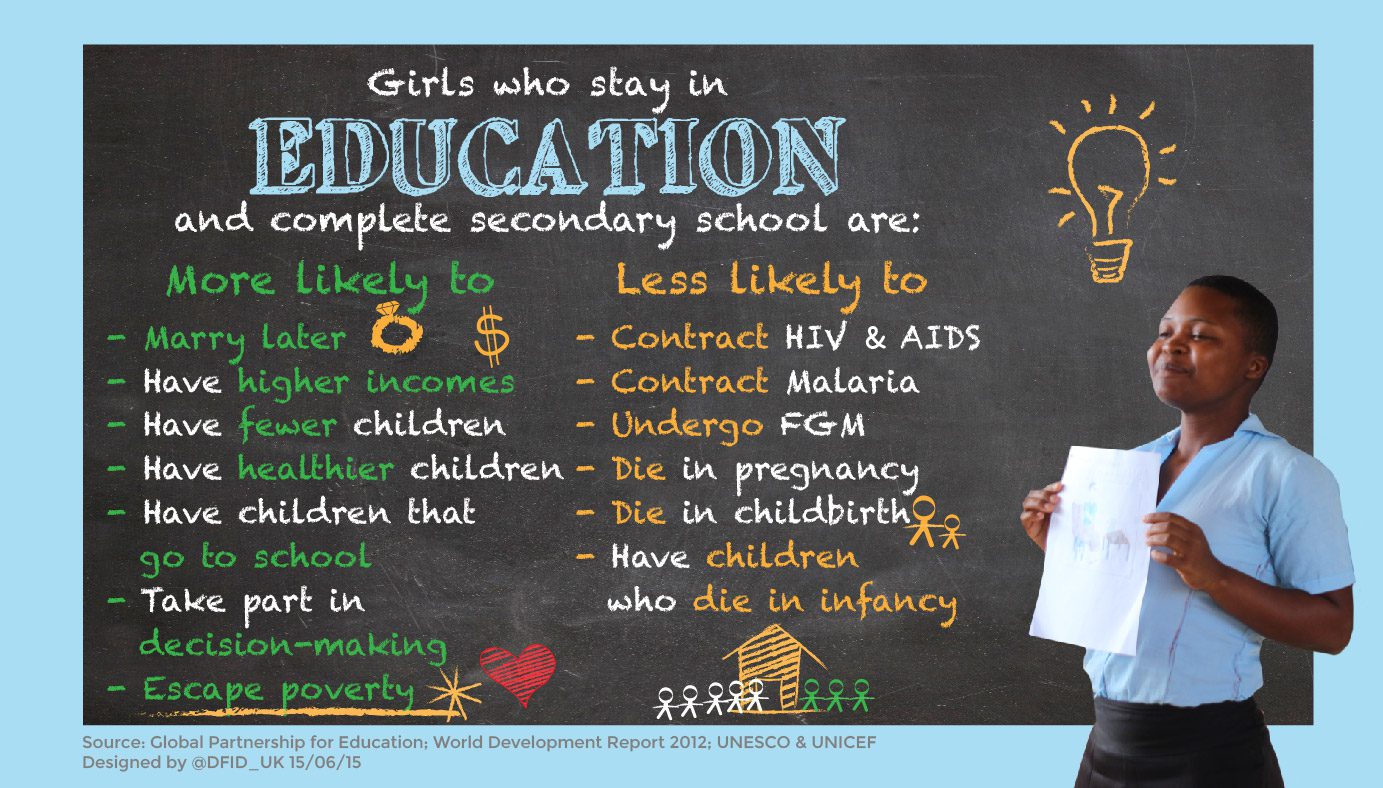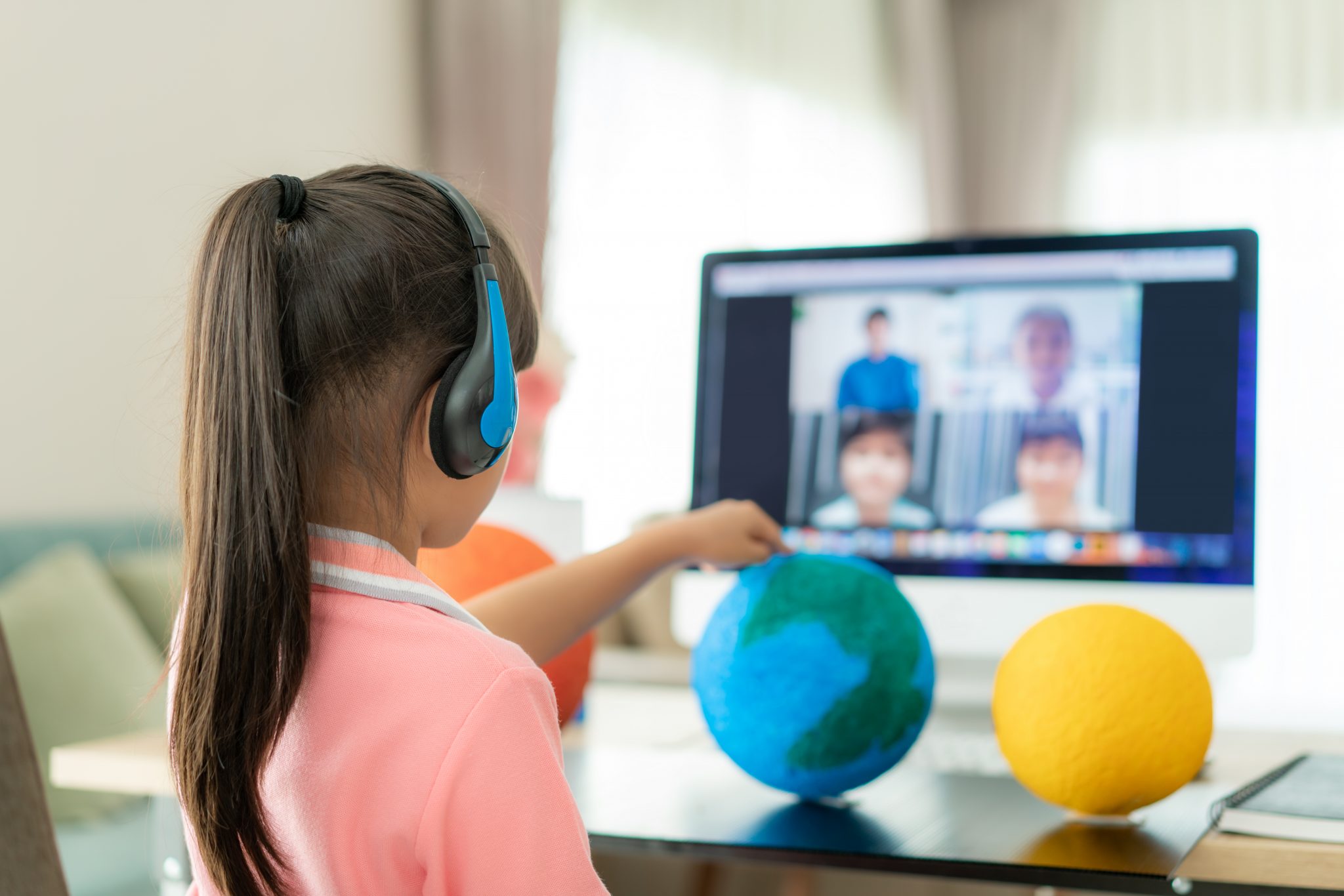This spring we are focusing on the United Nations Sustainable Development Goals (SDGs). In this post, we explore the impacts of the COVID-19 pandemic on achieving SDG goal 4 – education for all. Through the lens of education, we will connect to SDG 5, gender equality. Take the time to read to the end for a link to PopEd lessons that bring these topics into your classroom!
COVID-19 Has Had a Dramatic Impact on Education
SDG 4 is “ensure inclusive and equitable quality education and promote lifelong learning opportunities for all.“ SDG 4 is made up of 10 targets related to access to preschool and vocational and higher education, as well as improving the availability of scholarships to students in developing countries and increasing the number of qualified teachers.
SDG 4 is meant to be achieved by 2030. However, the COVID-19 pandemic profoundly disrupted this path to development.
Challenges of Educating During COVID-19
The pandemic brought school closures at an unforeseen scale. In March and April 2020, around 95 percent of children were not attending school. Prolonged absences from school have negative effects in the social and behavioral development of children.
During the pandemic over 90 percent of countries implemented some kind of remote learning. Teachers quickly implemented digital learning programs, many going above and beyond to teach in unbelievable circumstances. However, virtual learning was not accessible to everyone. UNICEF estimates that 463 million children (around 31 percent of children globally) were unable to access remote learning. Most of these students – 3 out of 4 – were located in rural areas and/or experiencing poverty.
Losing Progress on Child Labor
Compounding this, is the fact that many families lost income due to the pandemic and children were forced to enter the workforce or in some cases, marry earlier. In fact, this is the first time in 20 years that global gains in reducing child labor are being reversed. These threats are set to have life-altering consequences for millions of children worldwide. Research done by the World Bank, UNESCO and UNICEF showed that the current generation of students is at risk to lose $17 trillion of their lifetime earnings in today’s value—about 14 percent of today’s GDP at a global level.
 A Rise in “Learning Poverty”
A Rise in “Learning Poverty”
Even before the pandemic things were not quite on track for SDG 4 to be achievable by 2030. Learning poverty, which is defined as being unable to read and comprehend a simple text by age 10, is a term coined by the World Bank and UNESCO Institute for Statistics. Reading skills are necessary for all aspects of educational success, so the presence of learning poverty indicates cracks in the education system. Children who are unable to read by age 10 usually are not able to achieve reading later on. Prior to the pandemic, 53 percent of children in low and middle income countries were in learning poverty. The latest estimate of this rate projects a rise to 70 percent, a clear reflection of the impacts of the pandemic. The pandemic has put immense stress on a flawed system and children and teachers are the ones bearing these impacts.
Where SDG 4 Meets SDG 5
During the COVID-19 pandemic, the education of women and girls took an especially big hit. SDG 5 is to “achieve gender equality and empower all women and girls.” SDG 5 will be impossible to achieve when girls do not have access to education. Globally 129 million girls are out of school and only 49 percent of countries have achieved gender parity – meaning equal access and opportunity for all students in primary education. Sadly, research suggests that the disruptions faced during the pandemic will widen the pre-existing gender gap in education. As said by Nobel Peace Prize laureate and activist Malala Yousafzai, “In a crisis like COVID-19, girls and young women are the first to be removed from school and the last to return.” Girls were more likely to carry a greater burden of domestic and caretaker responsibilities throughout the pandemic, leaving them little time for schooling. World Vision warned back in May 2020 that globally 4 million girls were at risk for early and forced marriage due to poverty, school closures and financial stress for families related to the pandemic. Moreover, adolescent pregnancy rates were exacerbated by school closures, linked with a loss of support, an increased risk of sexual exploitation because of financial instability, and a lack of education about sexual and reproductive health. Young mothers face greater challenges and are less likely to return to school. The increase in gender-based violence and risk of forced marriage of girls and young women during the COVID-19 pandemic has been dubbed the “shadow pandemic.”
Data also suggests a digital divide, where girls were less likely than boys to own a mobile phone and were forced to rely on their relatives’ devices in order to participate in virtual learning. In a study conducted by Plan International in 14 different countries, girls and young women named education as the aspect of their lives most profoundly affected by the COVID-19 pandemic. Research from Malala’s Fund suggests that even an end to the pandemic could still keep 20 million secondary school aged girls out of school.
Investing in girls’ education is truly a recipe for success and must be prioritized in the return to school. Girls who receive an education are more likely to lead healthy lives, earn higher incomes, and build better futures for themselves and their families.
 A Path to Recovery
A Path to Recovery
In 2022, students in many countries have returned to school in person. This return has been rocky for many and shows that we have a long way to go before achieving SDGs 4 and 5. In the classroom, emphasis must be placed on student well-being and social-emotional health. Students are reeling from the mental health and social developmental impacts of periods of isolation. Secondly, to combat learning loss a focus needs to be placed on fundamental skills. Teachers cannot build on learning when the foundation is not there. Teachers have been consistently reinventing the wheel and showing up for their students despite lack of support and endless criticism from those who have never set foot in the classroom. Teachers cannot single handedly fix the educational crisis caused by the pandemic. They need robust support and it is time for policymakers to step up.
To globally achieve SDG 4 requires a prioritizing of underserved groups and already vulnerable populations. Although the pandemic has had profound impacts on learners worldwide, vulnerable populations have felt more strongly the brunt of the pandemic’s impacts. Students in Europe and North America experienced less learning loss than other parts of the world, like Latin America or Central/Southern Asia. And boys were more likely to stay in school than girls.
Although the UN proposes ideas at the global level to support education recovery worldwide, it is up to individual governments to create policies that support students and educators. Globally less than 3 percent of governments’ stimulus packages have been allocated to education. Governments need to make education a priority and more funding will certainly be needed. Similarly, few countries have used their stimulus packages to promote gender equality and increase opportunities for women. (One exception is an initiative from Canada that aims to double the number of women-owned businesses by 2025.)
The pandemic has wreaked havoc on education as we know and it is time to reckon with the system. Through the ups and downs of teaching and learning in the pandemic, the cracks in the education system have been brought to the spotlight and we must work toward improvement. SDGs 4 and 5 may feel more distant than ever, but teachers and policymakers can come together to create a better world through better schooling for all.
Don’t miss these lesson plans about empowering women and girls through education: Lessons for Life, A Woman’s Place, and American Herstory.
#PopEdSDGs
Image credits: Virtual learning (ID 1223522895 by ake1150sb, iStock); Graph (Girls’ gross enrollment ratio by UNESCO is licensed under CC BY-SA 3.0 IGO)



